Welcome to our guide on the Blue Myrtle Cactus (Myrtillocactus geometrizans). This fascinating plant, native to Mexico, is known for its striking blue-green color and unique geometric shapes. Whether you’re a seasoned cactus enthusiast or a beginner looking to add a touch of desert beauty to your home, this guide will provide you with everything you need to know about the Blue Myrtle Cactus.
Introduction to the Blue Myrtle Cactus
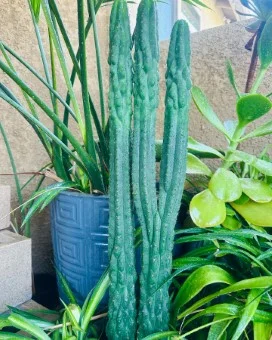
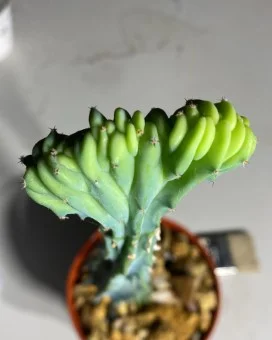
The Blue Myrtle Cactus, also known as Bilberry Cactus, is a member of the Cactaceae family. It can grow up to 13 feet tall, with branches that spread out like candelabra, creating a stunning visual display. This cactus is not only admired for its beauty but also for its hardiness and low maintenance, making it an excellent choice for both indoor and outdoor gardening.
Fact #1:
The Blue Myrtle Cactus produces small, edible berries that are often used in traditional Mexican cuisine.
Ideal Growing Conditions
To successfully grow a Blue Myrtle Cactus, it’s essential to replicate its natural environment as closely as possible. Here are the key factors to consider:
Light
This cactus thrives in full sun. Place it in a location where it can receive at least six hours of direct sunlight each day. If you’re growing it indoors, a south-facing window is ideal.
Soil
Blue Myrtle Cactus prefers well-draining soil. A cactus or succulent potting mix is perfect, but you can also make your own by mixing regular potting soil with sand and perlite.
Watering
One of the most crucial aspects of cactus care is watering. Blue Myrtle Cactus should be watered sparingly. Allow the soil to dry out completely between waterings. Overwatering can lead to root rot, a common issue with cacti.
Temperature and Humidity
This cactus is well-suited to warm, dry climates. It can tolerate temperatures as high as 100°F (38°C) and as low as 25°F (-4°C) for short periods. However, prolonged exposure to freezing temperatures should be avoided.
Fact #2:
Blue Myrtle Cactus is drought-tolerant and can survive long periods without water, making it a perfect plant for xeriscaping.
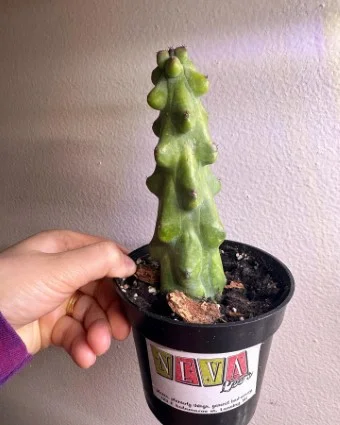
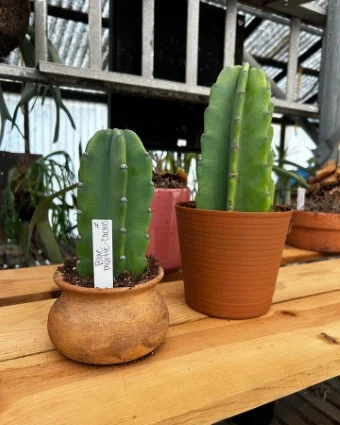
Planting and Repotting
When planting or repotting your Blue Myrtle Cactus, choose a pot that has drainage holes to prevent water from accumulating at the bottom. Gently remove the cactus from its current pot, being careful not to damage the roots. Place it in the new pot and fill in with your well-draining soil mix. Water lightly after repotting to help the plant settle in.
Fertilizing
While Blue Myrtle Cactus doesn’t require frequent feeding, you can give it a boost during the growing season (spring and summer) with a cactus fertilizer. A balanced, water-soluble fertilizer diluted to half strength is ideal. Apply it once a month to encourage healthy growth.
Pests and Problems
Blue Myrtle Cactus is relatively pest-resistant, but it can occasionally attract mealybugs and spider mites. These pests can be treated with insecticidal soap or neem oil. Overwatering is the most common problem, so always ensure the soil is dry before watering again.
Propagation
Propagating Blue Myrtle Cactus can be done through seeds or cuttings. Cuttings are the most common method. Here’s how to do it:
- Take a Cutting: Use a sharp, sterile knife to cut a segment from the parent plant. Allow the cutting to dry and callous over for a few days.
- Plant the Cutting: Place the cutting in a pot filled with well-draining soil. Keep the soil slightly moist until roots develop, which usually takes a few weeks.
- Care for the New Plant: Once the cutting has rooted, treat it like a mature cactus, providing plenty of sunlight and sparing water.
Fun Facts and Uses
- The berries of the Blue Myrtle Cactus are not only edible but also delicious, with a taste similar to blueberries. They can be eaten fresh or used in jams and desserts.
- This cactus is often used in landscaping for its striking appearance and ability to thrive in harsh conditions.

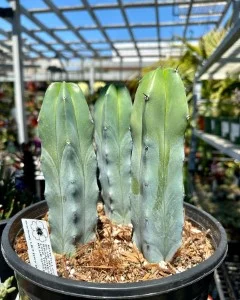
Conclusion
The Blue Myrtle Cactus is a stunning and resilient plant that can add a touch of desert elegance to any garden or indoor space. By providing the right conditions and care, you can enjoy the beauty and unique characteristics of this cactus for many years. Whether you’re a cactus novice or an experienced gardener, the Blue Myrtle Cactus is a delightful addition to your plant collection.
So, why not give it a try? With its low maintenance requirements and striking appearance, the Blue Myrtle Cactus is sure to become a favorite in your garden or home. Happy gardening!
